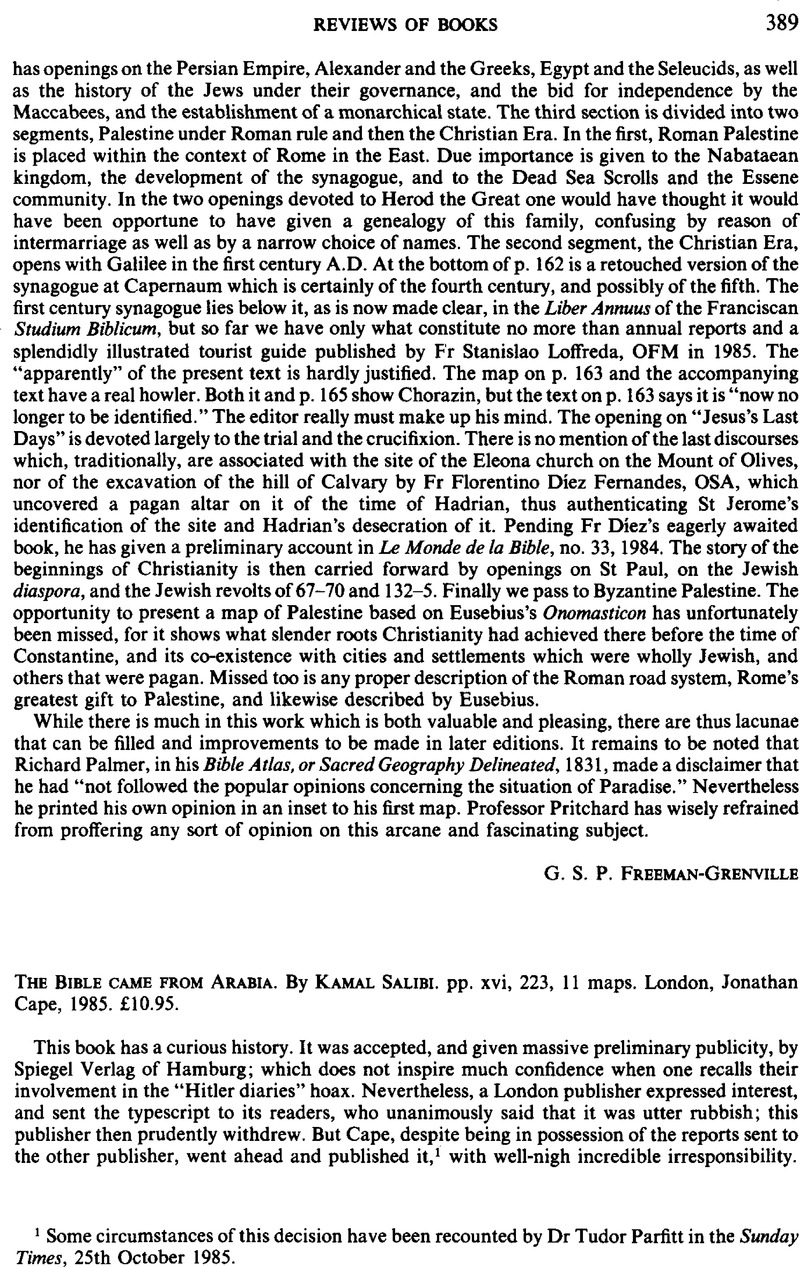No CrossRef data available.
Published online by Cambridge University Press: 15 March 2011

1 Some circumstances of this decision have been recounted by Parfitt, Tudor Dr in the Sunday Times, 25th 10 1985Google Scholar.
2 In the adjacent Yemen the first trace of a Jewish presence is fourth century AD.
3 As Dr Geza Vermes informs me.
4 The sense “bite off a chunk” given in mediaeval lexica seems to be post-classical.
5 ḥūg: this is the only difficult word in the passage to have caused controversy; it could be understood either as the “rim” that keeps the circumambient Ocean from spilling over into nothingness, or as the arc of the heavens.
6 In the Bible, the affair is represented as a “revolt” on the part of a tributary king, which is naturally not the way Mesha saw it.
7 One need only recall that in biblical Hebrew the finite verb form hiqṭilhas as its participle maqṭil from an earlier mēhaqṭil.